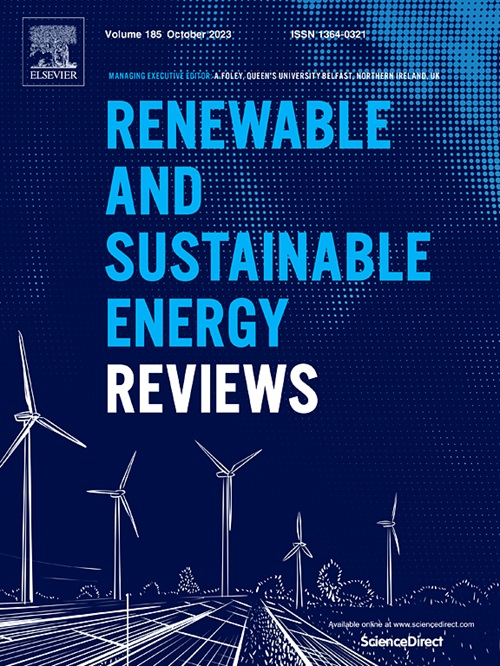与燃料电池相结合的氨基发电工艺综述
IF 16.3
1区 工程技术
Q1 ENERGY & FUELS
引用次数: 0
摘要
液体载体有望在氢的大规模运输中发挥关键作用。在各种候选材料中,氨作为一种无碳分子出现,并得到成熟、经济高效的基础设施的支持。在分散式发电中,氨储存可以直接与燃料电池集成,也可以通过裂解和分离装置间接地为质子交换膜燃料电池提供燃料。这种集成系统的整体能源效率受到单元操作之间的相互作用以及能量回收的放热和吸热耦合过程的潜力的强烈影响。本文分析了氨基系统与燃料电池集成的最新进展,重点从集成和性能的角度介绍了关键单元的特点和相互作用。确定了目前限制系统效率和部署的关键差距。特别关注的是氮和氨的分离,根据燃料电池的类型和操作条件,这将显著影响燃料电池的性能和整体系统效率。与加力燃烧室和燃气轮机的整合作为提高整体能量输出的策略进行了讨论。最后,回顾了电气化的机遇和安全问题,强调了潜在的危险、意外情况和缓解策略,以支持分散氨基电力系统的安全和可持续设计。本文章由计算机程序翻译,如有差异,请以英文原文为准。

Ammonia-based processes integrated with fuel cells for electrical power generation: a review
Liquid carriers are expected to play a pivotal role in the large-scale transport of hydrogen. Among the various candidates, ammonia emerges as a carbon-free molecule, supported by mature, cost-effective infrastructure. In decentralized electrical power generation, ammonia storage can be integrated directly with fuel cells or indirectly via cracking and separation units to feed proton exchange membrane fuel cells. The overall energy efficiency of such integrated systems is strongly influenced by the interaction between the unit operations and the potential to couple exothermic and endothermic processes for energy recovery. This review analyzes recent developments in ammonia-based systems integrated with fuel cells, focusing on the characteristics and interaction of key units from an integration and performance perspective. Critical gaps are identified that currently limit system efficiency and deployment. Particular attention is devoted to nitrogen and ammonia separation, which significantly affects fuel cell performance and overall system efficiency depending on the fuel cell type and operating conditions. Integration with afterburners and gas turbines is discussed as a strategy to enhance overall energy output. Finally, the review addresses electrification opportunities and safety concerns, highlighting potential hazards, accidental scenarios, and mitigation strategies to support the safe and sustainable design of decentralized ammonia-based power systems.
求助全文
通过发布文献求助,成功后即可免费获取论文全文。
去求助
来源期刊

Renewable and Sustainable Energy Reviews
工程技术-能源与燃料
CiteScore
31.20
自引率
5.70%
发文量
1055
审稿时长
62 days
期刊介绍:
The mission of Renewable and Sustainable Energy Reviews is to disseminate the most compelling and pertinent critical insights in renewable and sustainable energy, fostering collaboration among the research community, private sector, and policy and decision makers. The journal aims to exchange challenges, solutions, innovative concepts, and technologies, contributing to sustainable development, the transition to a low-carbon future, and the attainment of emissions targets outlined by the United Nations Framework Convention on Climate Change.
Renewable and Sustainable Energy Reviews publishes a diverse range of content, including review papers, original research, case studies, and analyses of new technologies, all featuring a substantial review component such as critique, comparison, or analysis. Introducing a distinctive paper type, Expert Insights, the journal presents commissioned mini-reviews authored by field leaders, addressing topics of significant interest. Case studies undergo consideration only if they showcase the work's applicability to other regions or contribute valuable insights to the broader field of renewable and sustainable energy. Notably, a bibliographic or literature review lacking critical analysis is deemed unsuitable for publication.
 求助内容:
求助内容: 应助结果提醒方式:
应助结果提醒方式:


